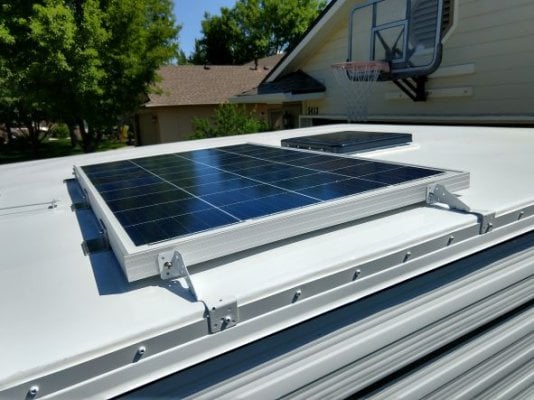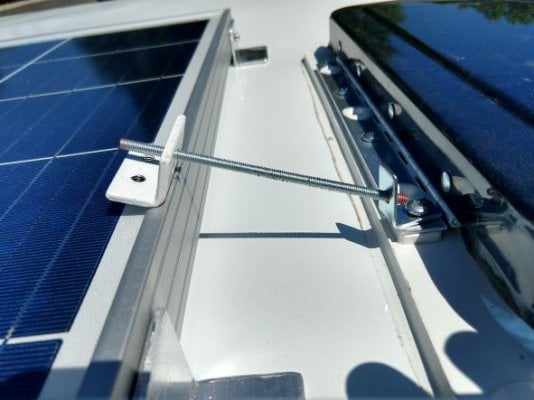Hello,
I was hoping to get some info about the ideal way to utilize a 12V fridge in my Hawk shell.
(If this needs to be moved to the Fridge Megathread, please do so - I would have posted there but it looks like the last response in that thread was from 2019).
I will have the standard camper battery that comes with a Hawk shell. I also have a Bluetti solar generator with a briefcase style solar panel.
My energy needs are fairly small (lights, cell phone charge, roof fans, furnace in colder months), but the idea of a fridge has me rethinking my setup.
I'd really love to avoid drilling any more holes in the roof, and therefore would prefer to avoid roof-mounted solar unless that is just the absolute most logical solution here.
I'm wondering if it would be smarter to put a fridge in the camper and run it off the solar generator, while moving that generator around as needed to charge from the portable solar panel and also from the truck's alternator while driving.
Or would it be better to put a second battery in the truck cab and use a DC-DC charger, and maybe even a solar charge controller plus my panel to keep that battery topped off?
Or do I need to beef up the battery bank (from one, currently) in my camper and go from there?
My issue is that I'd like to be able to stay in my Hawk for weeks-long stretches at a time while I do some traveling work gigs. The tricky thing is that I'd be parked at work most days, so not much driving, and I also wouldn't want to leave a solar panel just freely sitting out while I'm away from the vehicle. Seems like roof-mounted solar makes the most sense, but again I'm trying to avoid it if at all possible.
I think I might prefer the fridge in the cab, for ease of loading/unloading groceries, but maybe it seems foolish to be buying a whole new set-up (charge controller, battery, battery charger, etc.) when I already have a lot of components that could power a fridge.
Anyway, I know this is a rambling wall of text, but thanks to anyone who can offer some insight on the proper way to incorporate a 12V fridge into this type of setup!
I was hoping to get some info about the ideal way to utilize a 12V fridge in my Hawk shell.
(If this needs to be moved to the Fridge Megathread, please do so - I would have posted there but it looks like the last response in that thread was from 2019).
I will have the standard camper battery that comes with a Hawk shell. I also have a Bluetti solar generator with a briefcase style solar panel.
My energy needs are fairly small (lights, cell phone charge, roof fans, furnace in colder months), but the idea of a fridge has me rethinking my setup.
I'd really love to avoid drilling any more holes in the roof, and therefore would prefer to avoid roof-mounted solar unless that is just the absolute most logical solution here.
I'm wondering if it would be smarter to put a fridge in the camper and run it off the solar generator, while moving that generator around as needed to charge from the portable solar panel and also from the truck's alternator while driving.
Or would it be better to put a second battery in the truck cab and use a DC-DC charger, and maybe even a solar charge controller plus my panel to keep that battery topped off?
Or do I need to beef up the battery bank (from one, currently) in my camper and go from there?
My issue is that I'd like to be able to stay in my Hawk for weeks-long stretches at a time while I do some traveling work gigs. The tricky thing is that I'd be parked at work most days, so not much driving, and I also wouldn't want to leave a solar panel just freely sitting out while I'm away from the vehicle. Seems like roof-mounted solar makes the most sense, but again I'm trying to avoid it if at all possible.
I think I might prefer the fridge in the cab, for ease of loading/unloading groceries, but maybe it seems foolish to be buying a whole new set-up (charge controller, battery, battery charger, etc.) when I already have a lot of components that could power a fridge.
Anyway, I know this is a rambling wall of text, but thanks to anyone who can offer some insight on the proper way to incorporate a 12V fridge into this type of setup!





